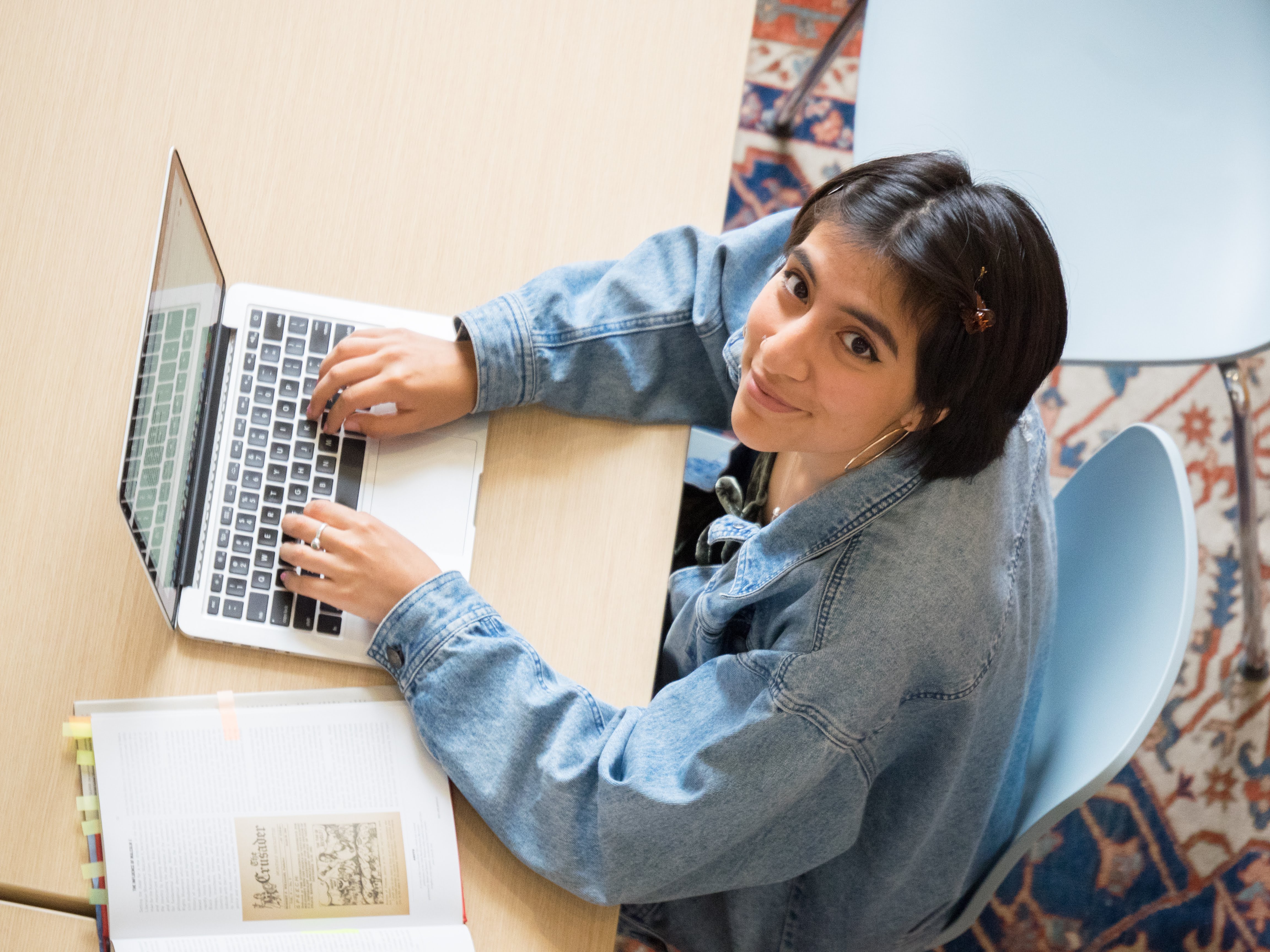More Than Words
Fellowship sends Ivanna Berrios, C’21, to Peru to explore the ancient language of Quechua.
In Quechua, the word raph refers to the sound a bird’s wings make in flight. No other language offers an equivalent for this specific term.
The wealth of similarly expressive, nature-oriented Quechuan words is what makes Ivanna Berrios, C’21, find the language so beautiful. “I love that one of their standard colors, cheqchi, is a mixture of brown, beige, and black that is based off the coloration of a llama. It’s so unique, almost like poetry, that their entire vernacular is drawn from their environment and lifestyle,” she says.
Berrios is a comparative literature major but has also studied in Penn’s Quechua Language Program—the only program of its kind offered by an Ivy League institution. Both of her parents emigrated from Peru to New York as young adults, and although neither speaks Quechua, she developed an early fascination with the indigenous language, possibly because her mother used to pepper everyday conversations with common Quechuan words (like mikhuy, or “eat”). Before Berrios enrolled at Penn, she had no idea the Quechua program existed, and she was thrilled to discover the opportunity to connect with her roots by taking classes on campus.
Generally regarded as a Spanish-speaking country, Peru actually has multiple official languages—including Quechua, which is not one single language but rather a family of closely related languages that bear distinct variations from region to region. Predating the Spanish conquest of the Incas, Quechua unified the territory that today comprises Peru, Ecuador, Chile, Bolivia, Colombia, and Argentina. More than six million native speakers remain throughout the central Andes, but use of Quechua is steadily declining, and enthusiasts aim to preserve the language.
As one of these enthusiasts, Berrios spent last summer immersing herself in Andean culture in the Peruvian city of Cusco, the center of the ancient Incan Empire. Her trip was supported by a Foreign Language and Area Studies (FLAS) Fellowship, a prestigious federal grant program that promotes intensive foreign language and international studies. Staying with a host family, she took daily language and cultural classes as well as short trips to remote areas where Quechua is more prevalent.
“In one rural community, I befriended a girl who was 8 or 9 years old and found out she’d never even learned Quechua. The assumption is that people in those areas will always continue to speak Quechua, but they see now that it is easier to get jobs if you speak Spanish—so parents don’t teach their kids Quechua anymore. It isn’t advantageous for them, and Quechua is kind of shamed and associated with poverty,” Berrios says. “This culture will die out if people don’t actively try to revitalize it.”
Américo Mendoza-Mori, a lecturer in Hispanic and Portuguese Studies and founder of the Quechua Initiative at Penn, leads the College’s Quechua preservation efforts. Beyond teaching traditional academic courses, Mendoza-Mori coordinates various activities for people who speak or are interested in Quechua, including spearheading an annual meeting for the Quechua Alliance, an organization that promotes Andean culture in the U.S.
Penn hosted this year’s event Nov. 17 at the Perry World House and welcomed guests including a Quechua hip-hop artist, the founder of the Quechua Collective of New York, and a representative from the U.N. Permanent Forum on Indigenous Issues.
“This is the biggest gathering of its kind in the U.S. and is a unique space where young people, scholars, and community stakeholders encounter and develop leadership at a moment when there is an increasing interest in indigenous languages and cultures of the Americas,” says Mendoza-Mori, noting that Penn has hosted the meeting three times since its inception in 2015. “Through these kinds of initiatives, we are turning the University into a key place for global conversations on indigenous issues while building a strong network and community of Quechua language enthusiasts.”
Berrios volunteered at the event, and her involvement didn’t surprise Mendoza-Mori, who describes her as a passionate and curious student.
“Since I’ve met Ivanna, she has been open about her Peruvian-American heritage and her desire to learn more about it,” he says. “She embraces the complexity of people’s identities, including her own, and is willing to research and engage with Andean and Quechua cultures. By doing that, she is looking to go beyond static notions of identity.”
Photo credit: Jennifer Ponce de León



